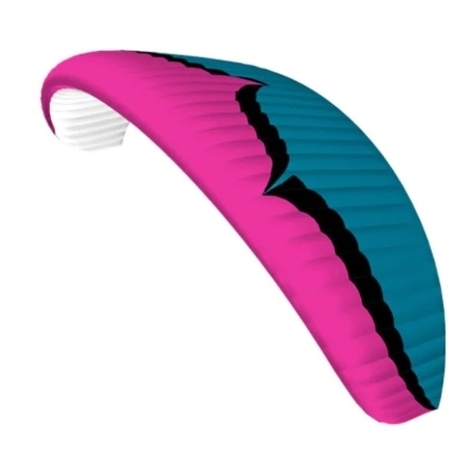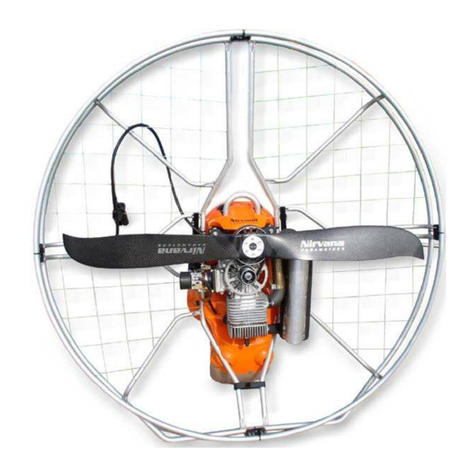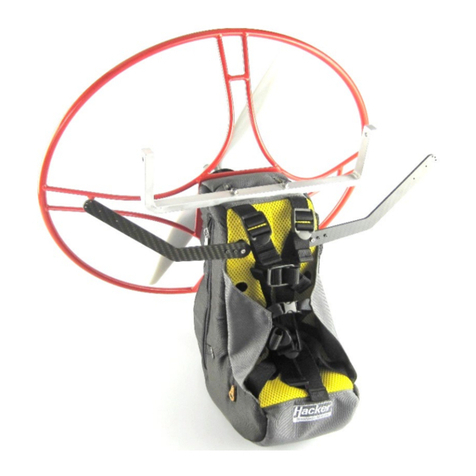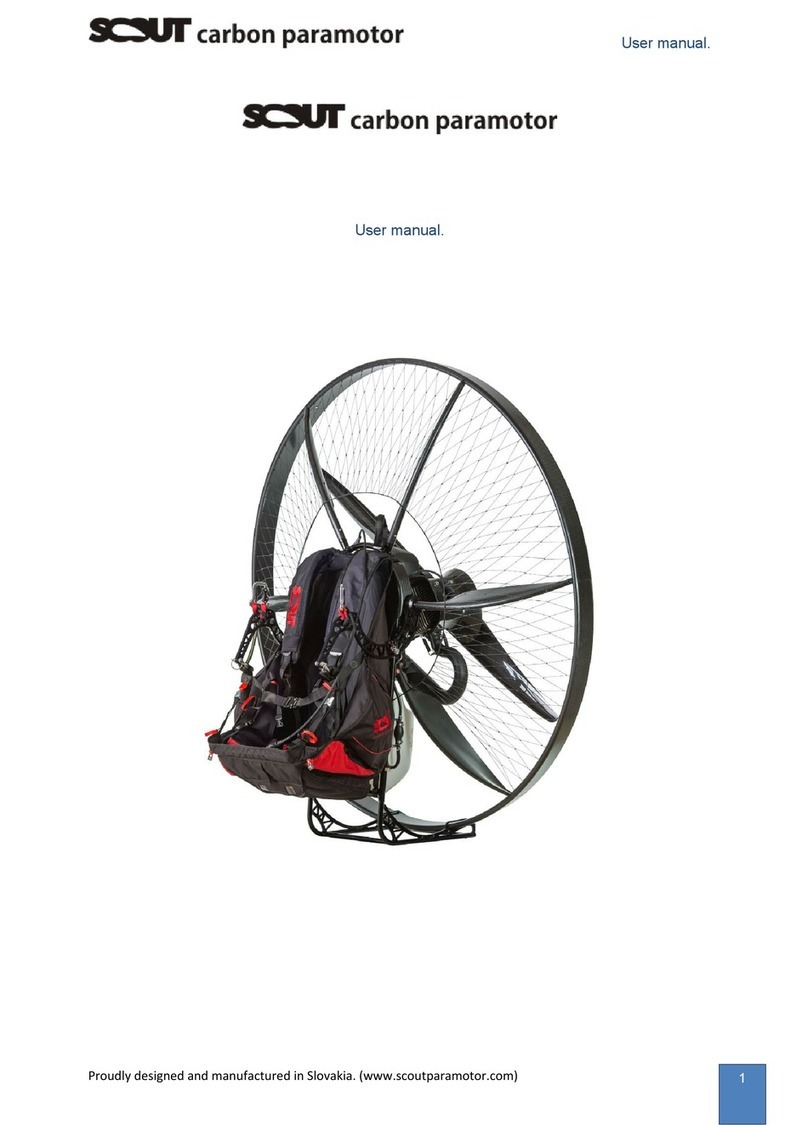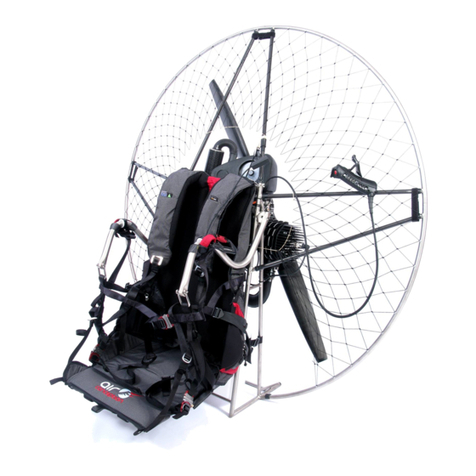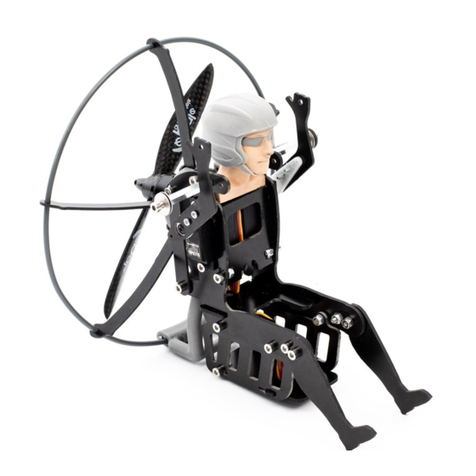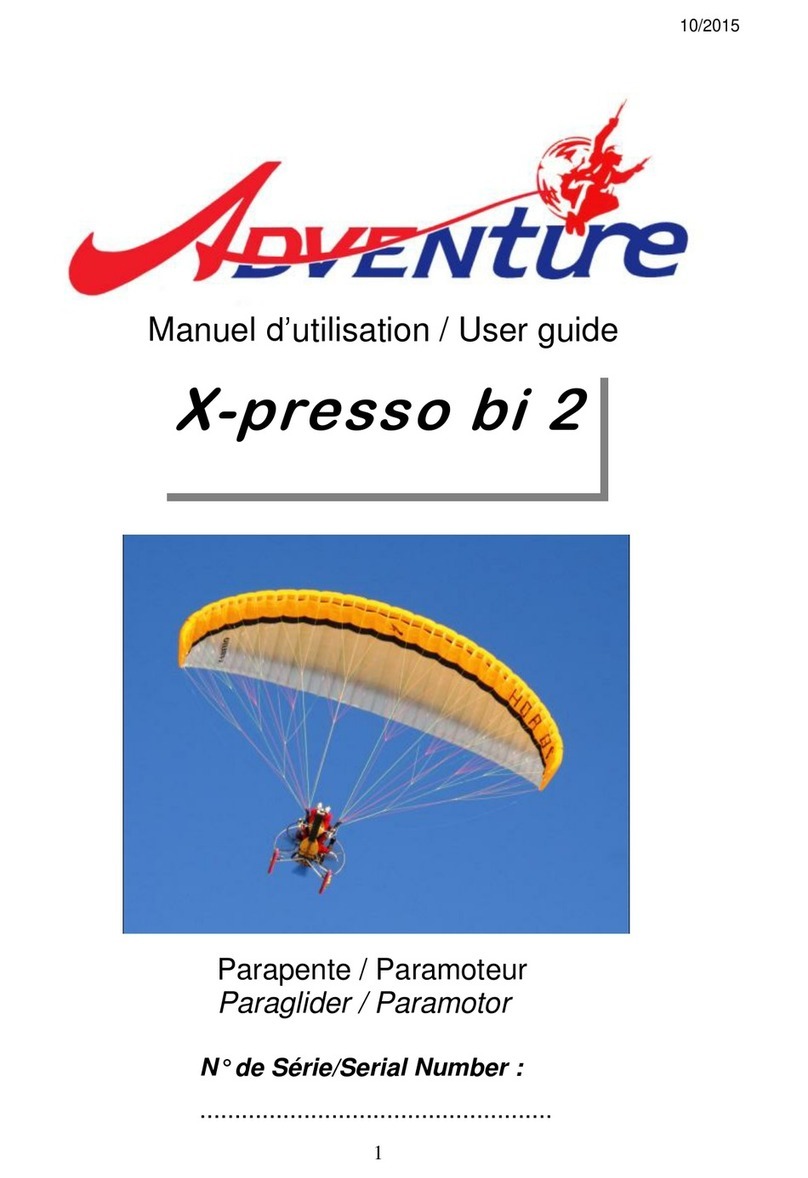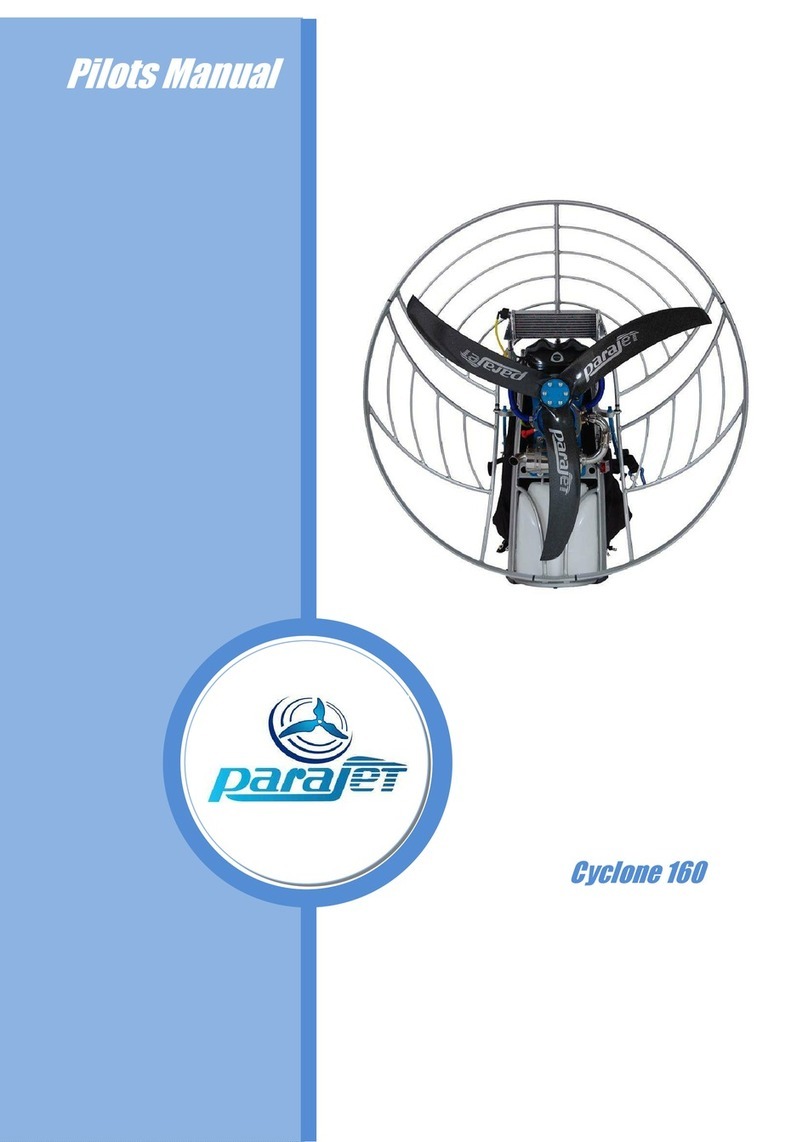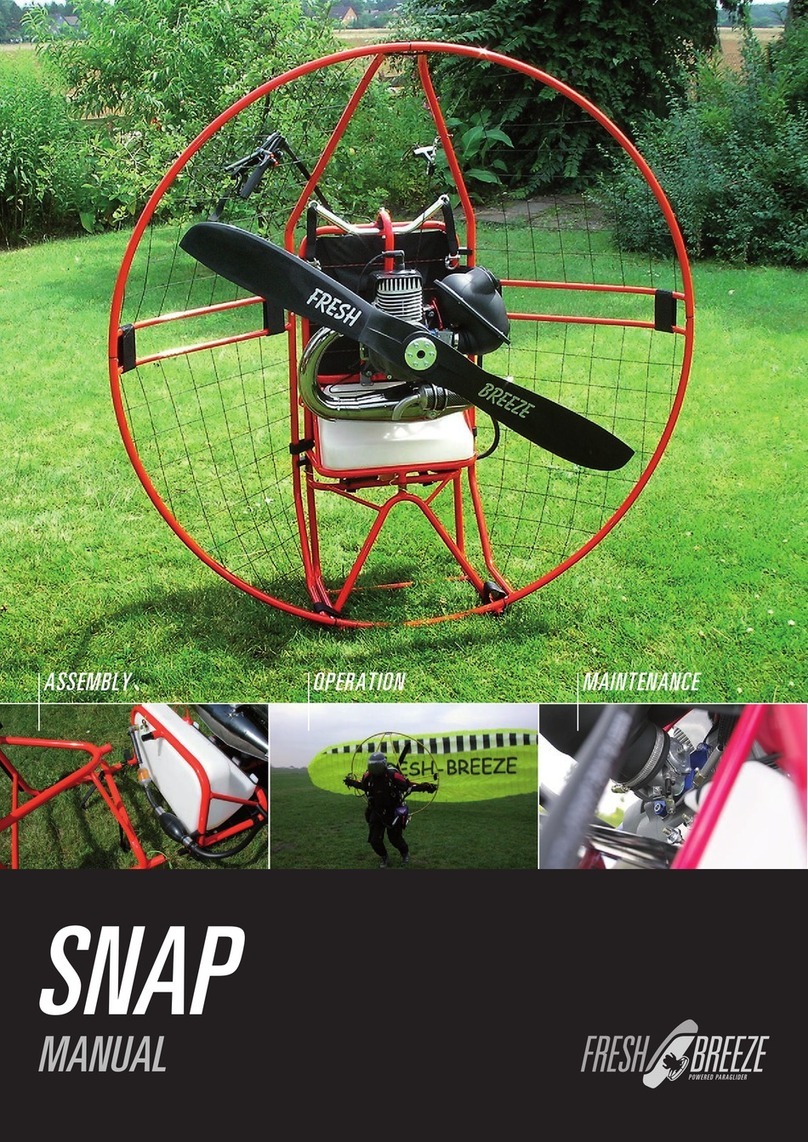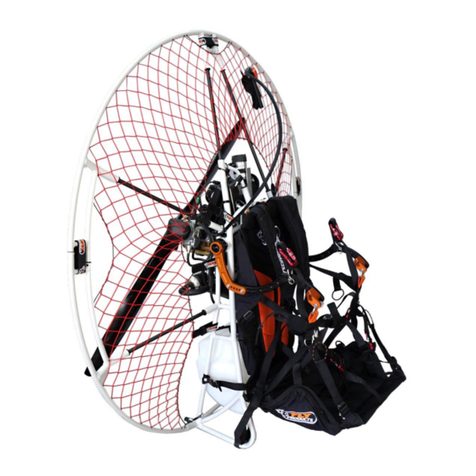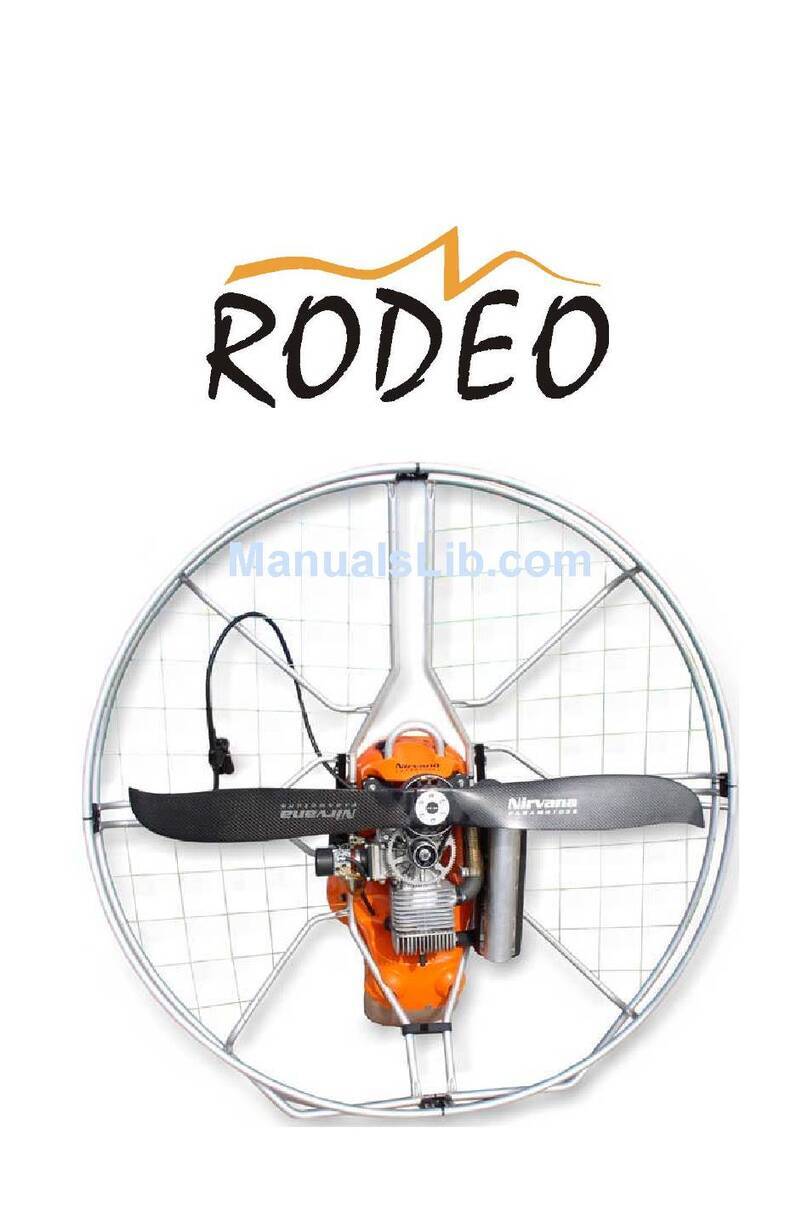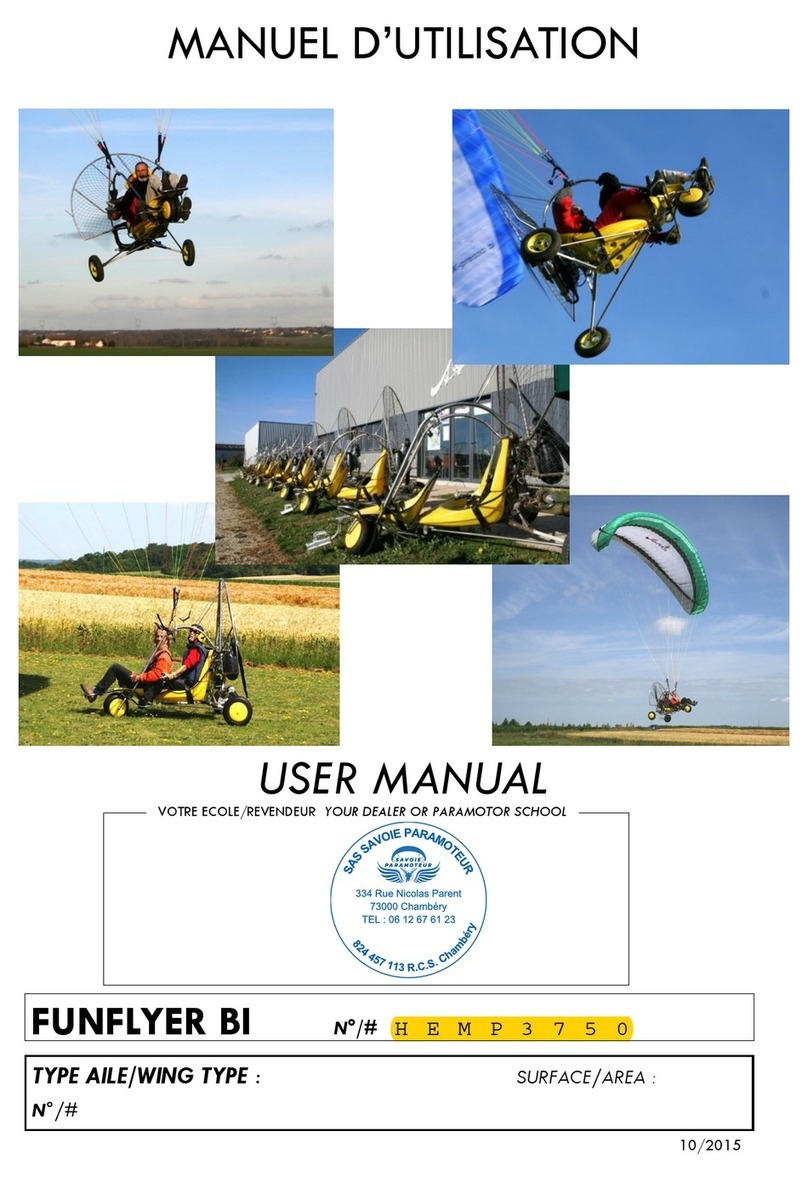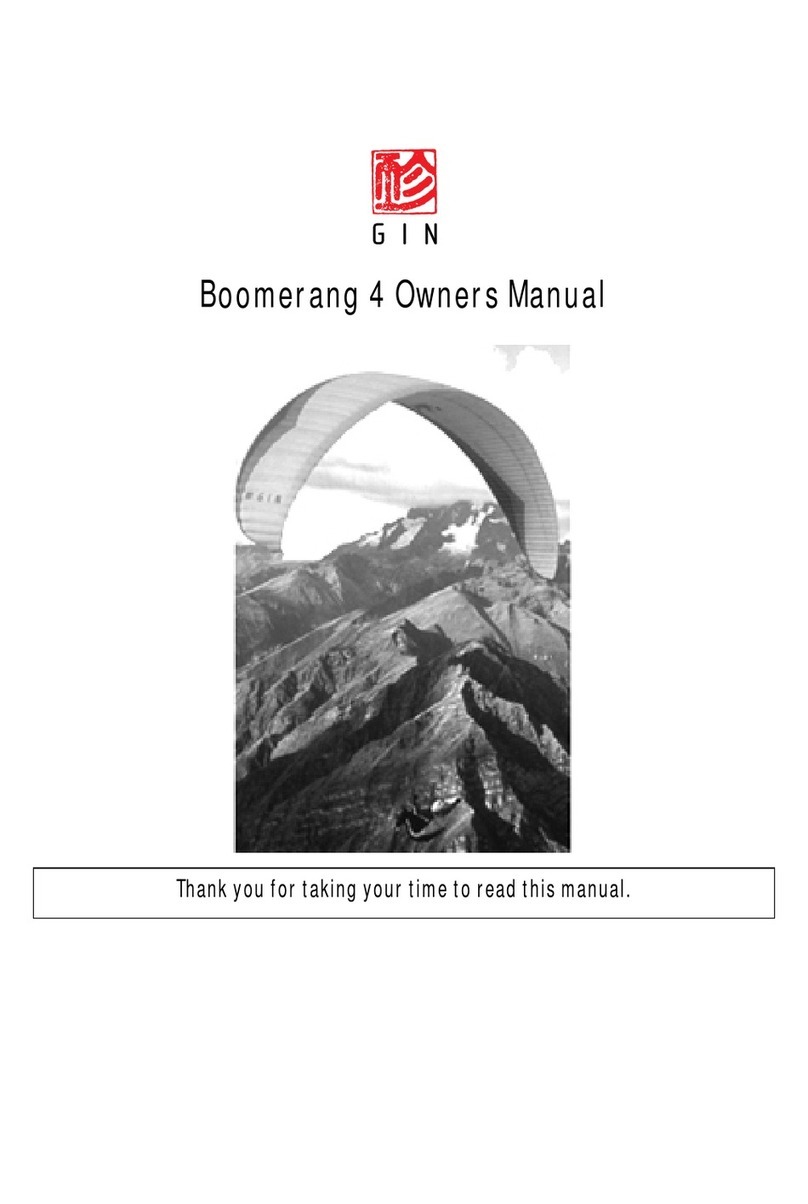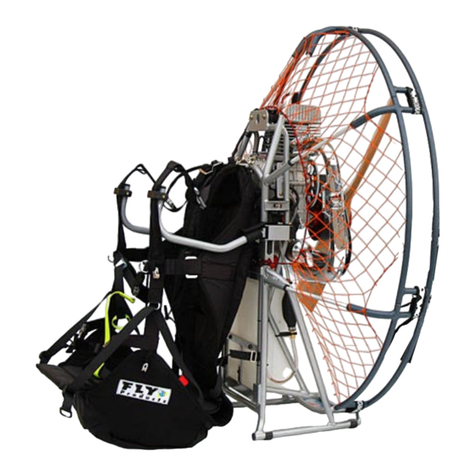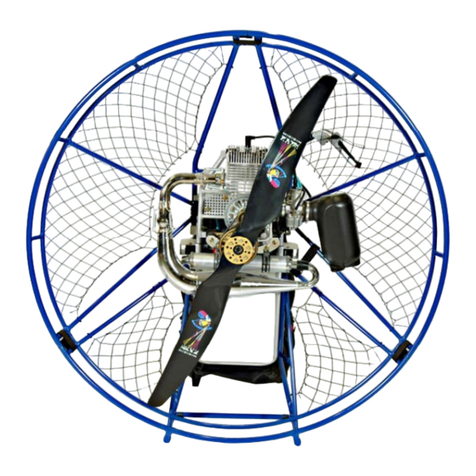
User´s manual –RC paramotor - 7 -
paragliders and accessories for RC paragliding www.rcparasky.com
B. Control via the so-called delta-mix
If you choose the delta-mix control, there is a disadvantage that you can't control each pilot's hand
separately. However, this applies only to older types of RC transmitters. For newer RC transmitter models,
you can set the same control as in "A. Classic hand control". For older types of RC transmitters, where it
isn't possible to control each hand individually, the following control features apply:
pull the left lever on the transmitter to yourself, the motor is off
push the left lever on the transmitter from yourself, the motor speed increases (add gas)
push the left lever to the left, the left pilot's hand will go down and the right one will go up
push the left lever to the right, the right pilot's hand will go down and the left one will go up
pull the right lever to yourself, both pilot's hands will go down
pull the right lever from yourself, both pilot's hands will go up
this position is shown in the picture: this position is shown in the picture:
„push the left lever to the left, the left pilot's hand will „pull the right lever from yourself, both pilot's hands
go down and the right one will go up“will go up“
3.3. Check the paramotor weight
Always weigh the paramotor before flying and try to balance the weight to the correct ratio of the
chosen RC canopy according to the manufacturer's recommendations.
The weight check of the paramotor is very important. If you choose the right weight, the RC canopy
will be more responsive to controlling, will be more vivid and skillful. At a lower load, the canopy will be
less stable.
In case you need to add additional weight to the paramotor, it is important to keep the correct center of
gravity of the whole flight system and the right tilt of the suspended paramotor under the canopy, so the
entire system must be balanced during flight. If this isn't the case, then the paramotor can get into the
wrong position after the takeoff - either in the "leaning forward" or "leaning backward" position. A large
backward leaning causes the torque to be transmitted from the propeller to the vertical axis, which may
cause rotation of paramotor around the vertical axis, if the motor is too strong and the paramotor too light.
Then the lines will tangle together and you will loose control - so called "twist". Such situation can not
occur with a well balanced paramotor.
